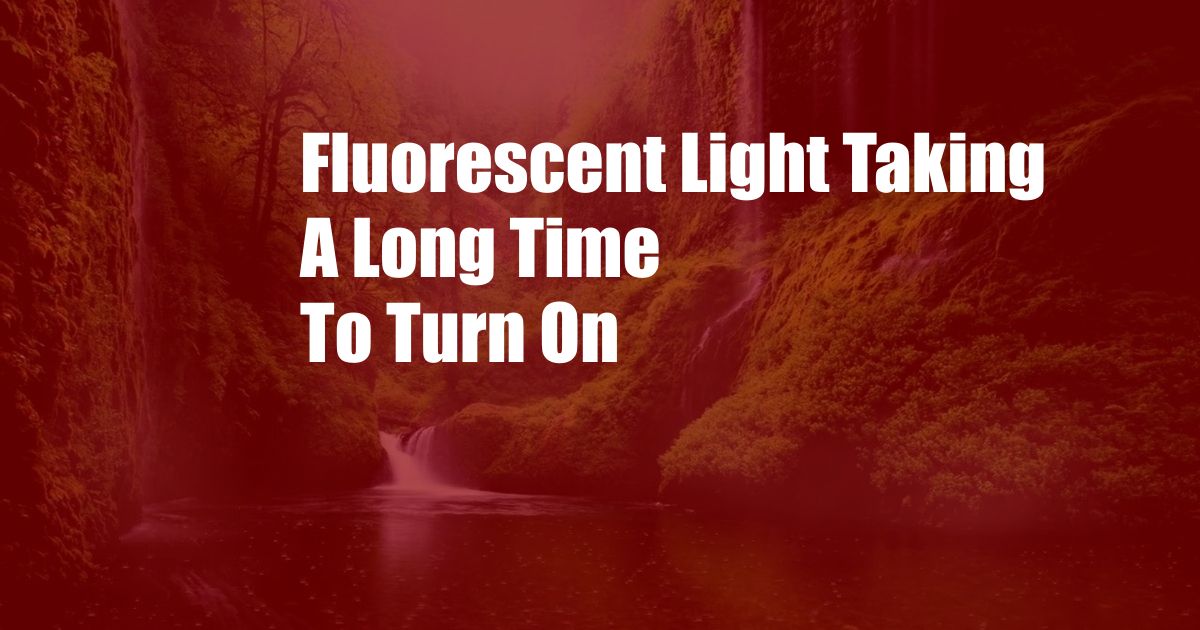
Fluorescent Lights: Why Do They Take So Long to Turn On?
As I stepped into the dimly lit room, I reached for the light switch, expecting the space to be instantly illuminated. Instead, I was met with a moment of darkness before a faint flicker appeared. Slowly, the fluorescent lights struggled to life, casting an eerie glow throughout the room.
This delay in illumination is a common occurrence with fluorescent lights, and while it may seem like a minor inconvenience, it can lead to frustration, especially in situations where immediate brightness is essential. In this article, we’ll delve into the reasons why fluorescent lights take so long to turn on, exploring the fascinating science behind this phenomenon.
How Fluorescent Lights Work
Fluorescent lights operate on a different principle than incandescent lights. In incandescent bulbs, an electric current flows through a thin wire filament, heating it to extremely high temperatures, causing it to glow. Fluorescent lights, on the other hand, utilize a process of fluorescence.
Inside a fluorescent tube, a high-voltage current passes through a mixture of mercury vapor and inert gases. This creates ultraviolet (UV) light, which is invisible to the human eye. The UV light strikes a coating of phosphor on the inside of the tube, causing it to emit visible light.
The Time Lag
The time delay associated with fluorescent lights is primarily due to two factors: the warm-up period and the ionization process.
Warm-Up Period: When fluorescent lights are turned on, a current flows through the electrodes, heating the mercury vapor and causing it to vaporize. This process takes several seconds, during which the light will remain dim or flicker.
Ionization Process: The ionized mercury vapor creates a plasma, which allows the electric current to flow through the tube. This ionization process also takes time, contributing to the delay in light output.
Factors Affecting the Delay
The length of the time delay can vary depending on several factors:
- Temperature: Cold temperatures can slow down the warm-up process, causing longer delays.
- Tube Age: Older fluorescent tubes may take longer to turn on due to the gradual depletion of the phosphor coating.
- Ballast Type: Different types of ballasts, such as electronic or magnetic, can influence the warm-up speed of the lights.
Tips for Reducing the Delay
While the time delay is inherent to fluorescent lights, there are a few tips to minimize it:
- Maintain Proper Temperature: Ensure that fluorescent lights are operated in a warm environment, as cold temperatures slow down the warm-up process.
- Use Electronic Ballasts: Electronic ballasts provide a faster start-up time compared to magnetic ballasts.
- Replace Old Tubes: Regularly replacing old fluorescent tubes with new ones can improve light output and reduce the time delay.
FAQ
Q: Why do fluorescent lights flicker when turned on?
A: The flickering is caused by the uneven ionization process during the start-up phase.
Q: Can I prevent fluorescent lights from taking so long to turn on?
A: While the time delay cannot be completely eliminated, using electronic ballasts, maintaining proper temperature, and replacing old tubes can help reduce it.
Q: Are fluorescent lights more energy-efficient than incandescent lights?
A: Yes, fluorescent lights are significantly more energy-efficient than incandescent bulbs.
Conclusion
The time lag associated with fluorescent lights is a result of the warm-up and ionization processes involved in their operation. While this delay can be frustrating, it can be minimized by following the tips outlined in this article. Understanding the science behind fluorescent lighting can help us appreciate the complexity of modern illumination systems and optimize their performance for maximum efficiency and convenience.
If you found this article informative, we’d love to hear your thoughts in the comments section below. Do you have any questions or insights about fluorescent lights and their time delay?